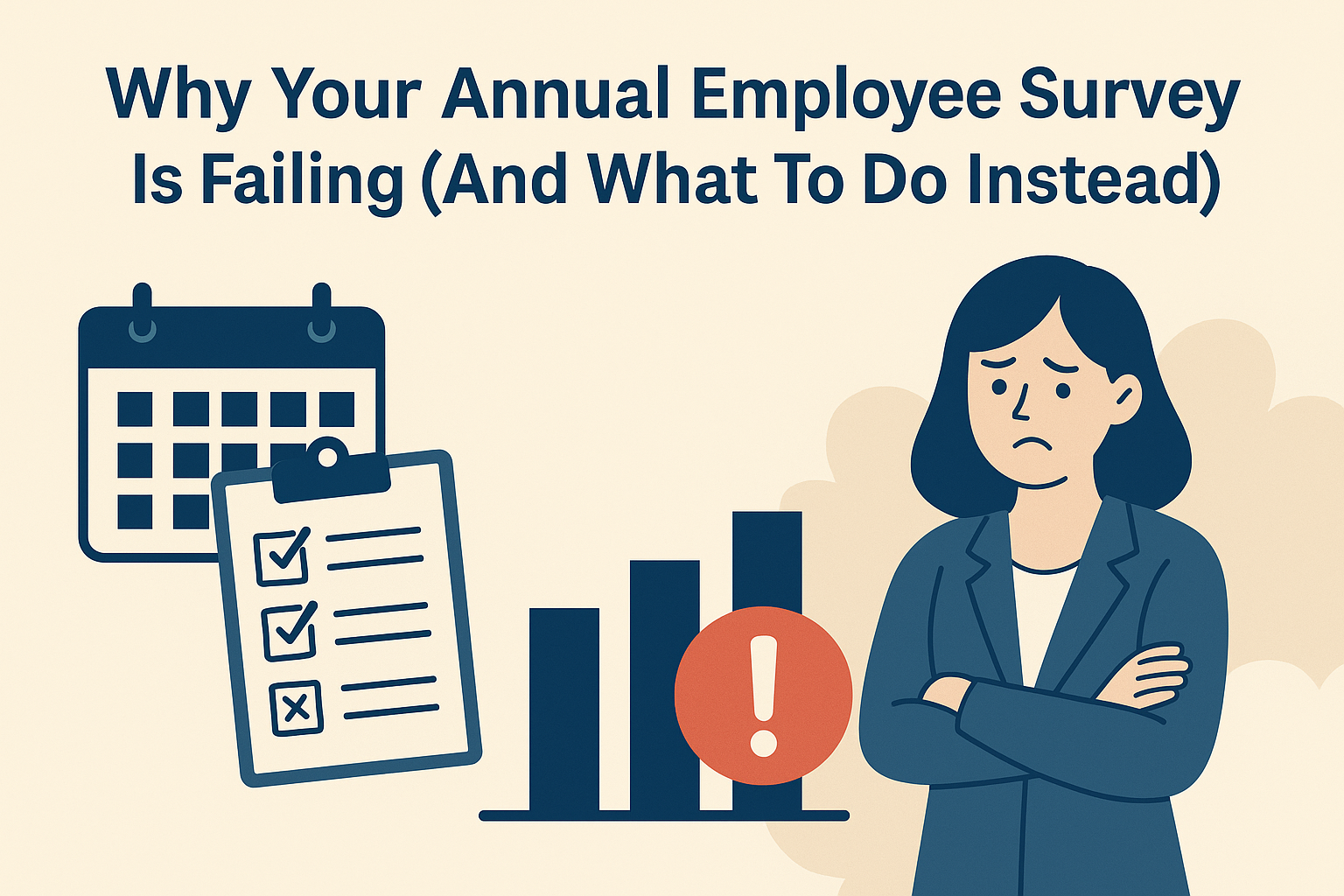Do You Belong in HR? If You’ve Asked Yourself This, You’re Not Alone
Table of Contents
- Introduction
- Why Imposter Syndrome
- Strategies to Overcome
- The Role of Self-Development
- Build Confidence
- Key Takeaway: Listen, Learn...
- Final Thoughts

Overcoming Imposter Syndrome in HR & Employee Engagement
Have you ever wondered, “Do I really belong here?” or “Am I actually making an impact?” If so, you’re not alone.
Imposter syndrome is a silent struggle that many HR professionals and People Ops leaders experience. The very nature of the job—constantly adapting to workplace shifts, supporting employees, and navigating leadership expectations—makes it easy to feel like you’re not doing enough.
HR is a field that often lacks immediate, tangible success markers. Unlike sales, where revenue figures validate performance, HR’s impact is nuanced and long-term. You roll out a new initiative, introduce a policy, or implement a cultural change—and sometimes, it takes months (or even years) to see the results. Meanwhile, self-doubt creeps in.
- What if no one engages with this?
- What if I’m not making a difference?
- Maybe I just got lucky.
The truth is, you’re not alone in feeling this way. The best HR and People Ops leaders don’t have all the answers. Instead, they ask the right questions, continuously learn, and take action—despite their doubts.
Why Imposter Syndrome is Common in HR
HR professionals often feel imposter syndrome due to three key reasons.
- Rapidly Changing Employee Expectations
- The Challenge of Measuring Impact
- Working Alongside Experienced Leaders
Workplace expectations shift faster than ever. Employees now prioritise hybrid work, mental well-being, diversity and inclusion, and career development. HR teams must adapt and respond to these changes while ensuring policies align with business goals. Keeping up with these evolving demands can make HR professionals feel like they’re constantly playing catch-up.
Unlike sales, where revenue figures indicate success, HR’s influence is often less tangible. How do you measure a healthier work culture? What metric captures improved employee satisfaction or stronger leadership development? Without clear KPIs, HR leaders may struggle to validate their contributions, fueling feelings of doubt.
HR professionals collaborate with senior executives, department heads, and industry experts. Seeing their confidence and expertise can lead to self-doubt. You might wonder if they have knowledge you lack, leading to feelings of inadequacy. Many HR leaders launch initiatives, introduce engagement strategies, or present to leadership and suddenly hear a nagging voice of doubt.
Strategies to Overcome Imposter Syndrome in HR
- Aim for Progress, Not Perfection
- Recognise and Track Wins—Even the Invisible Ones.
Not all HR wins are easily measurable, but that doesn’t mean they’re insignificant.
- If a manager improves their feedback style, that’s progress.
- If an employee stays with the company because they feel valued, that’s a win.
- If a team reports improved collaboration due to HR initiatives, that’s impact.
Keep a record of successes, even anecdotal ones. Maintain a journal of positive changes and employee feedback. Reviewing these notes during self-doubt moments reinforces your value.
- Lean on Your HR Community
- Join HR communities, both online and offline.
- Attend HR conferences, webinars, and networking events.
- Seek mentorship or peer support from experienced professionals.
- Reframe Your Perspective—You Are the Expert
- Focus on the Right Metrics
- Employee retention rates
- Improvement in leadership and team dynamics
- Higher participation in HR initiatives
- Stronger internal communication
Culture doesn’t change overnight. Instead of striving for flawless execution, focus on continuous improvement. Small, consistent enhancements create lasting impact. HR is a long game. Every initiative contributes to the bigger picture. Even incremental changes matter. Instead of overhauling an entire engagement strategy, implement small adjustments and measure their effectiveness over time.
HR can feel isolating. Unlike sales or marketing, which operate in teams, HR professionals often work independently on sensitive initiatives.
Connecting with other HR leaders helps combat imposter syndrome. Sharing challenges and experiences normalises doubts and highlights shared struggles.
HR networks, mentorships, and forums provide support. Open conversations can break the illusion of being alone in these challenges.
If you’re shaping employee experience, you have valuable insights others don’t.
HR professionals play a vital role in shaping workplace culture. Your expertise in engagement, retention, and employee well-being offers unique contributions.
Own your knowledge, test new ideas, and trust your ability to drive meaningful change. Instead of doubting your expertise, remind yourself that you are the one creating a positive work environment for employees.
HR success isn’t about chasing high engagement survey scores. It’s about fostering a culture where employees feel valued, supported, and motivated.
Define success based on:
These metrics reflect real impact, even if they don’t come in the form of traditional business KPIs.

The Role of Self-Development in Overcoming Imposter Syndrome
Imposter syndrome often stems from a feeling of not knowing enough. Continual learning is key to staying confident in your HR role. Here’s how you can invest in your development:
- Stay updated on HR trends through industry blogs, podcasts, and webinars.
- Take courses on leadership, organisational psychology, or employee experience.
- Participate in HR certifications to strengthen your knowledge and credibility.
- Engage in HR case studies to see real-world application of strategies.
Investing in your growth not only boosts confidence but also positions you as a knowledgeable leader in your organisation.
Building Confidence Through Action
Overcoming imposter syndrome isn’t about eliminating self-doubt entirely. It’s about recognising it, reframing it, and taking action despite it. Here’s a step-by-step approach to build confidence in your HR role:
- Acknowledge Your Expertise
- Seek Feedback
- Experiment & Iterate
- Celebrate Wins
- Find Your Support System
List your skills, accomplishments, and past successes. Recognise your contributions.
Regularly request feedback from colleagues and employees to validate your impact.
Treat HR strategies as experiments. Try new approaches, learn from results, and refine your methods.
Acknowledge and appreciate small victories. Share them with leadership and your team.
Engage with other HR professionals for perspective and encouragement.
Key Takeaway: Listen, Learn, and Lead
The best HR leaders don’t have all the answers. They listen, learn, and adapt to create meaningful impact.
By focusing on progress, tracking small wins, engaging with a community, and recognising your expertise, imposter syndrome can be managed effectively.
HR professionals play a crucial role in organisational success. Your work matters—even if the results aren’t always immediately visible.
Final Thought
Imposter syndrome doesn’t mean you aren’t good enough—it means you care. The very fact that you’re questioning your impact shows your commitment to making a difference.
So keep going. Keep improving. And remember, you belong here.



